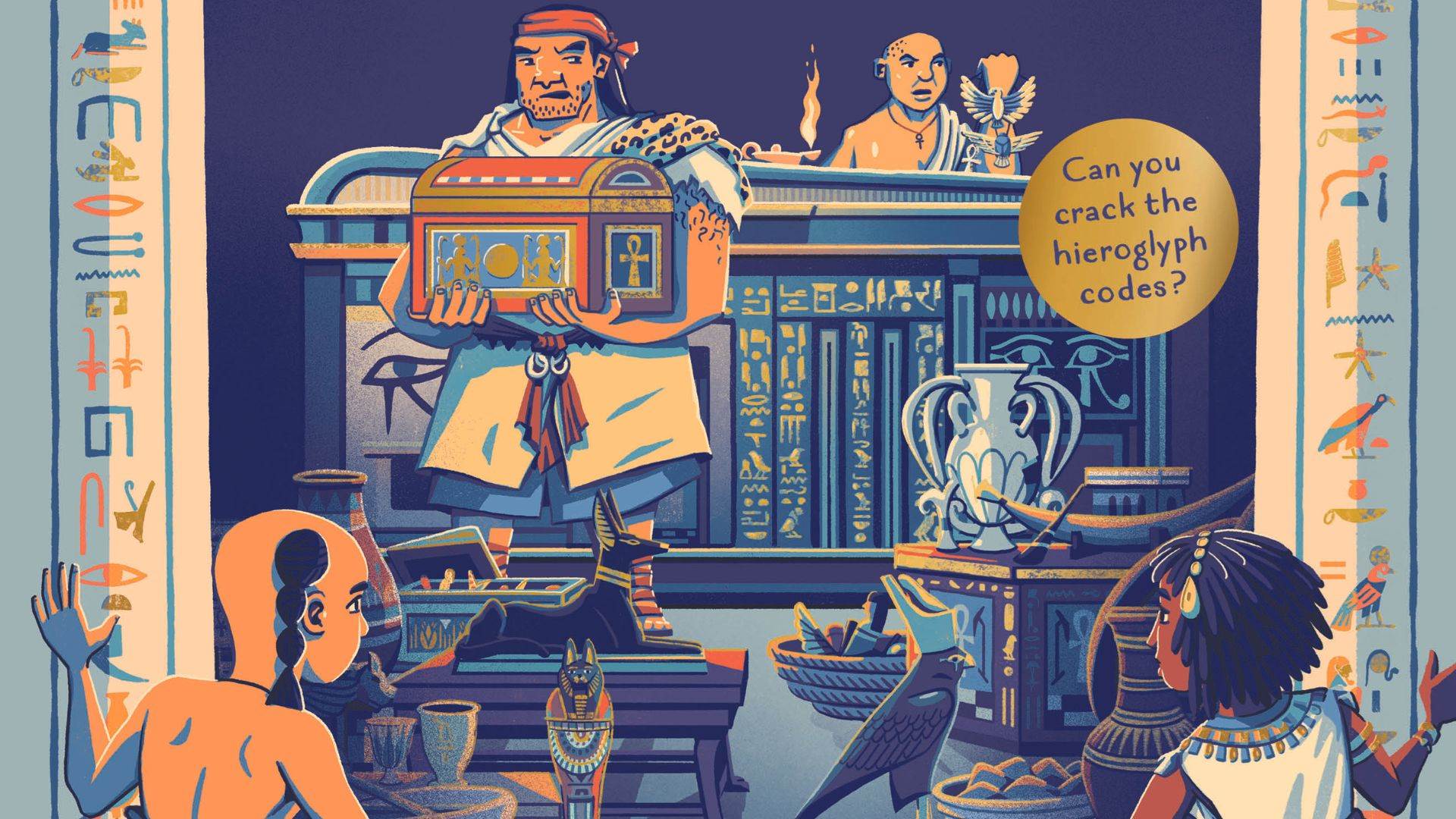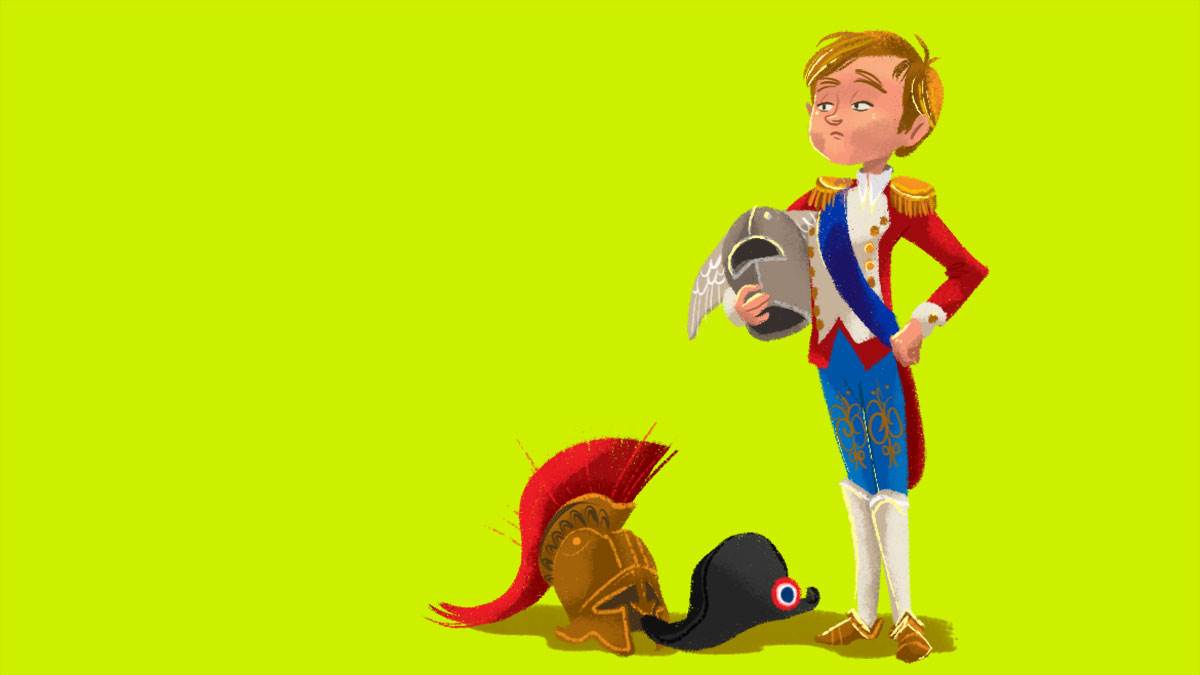How to use books to bring history to life in primary schools
Published on: 22 November 2022
Andy Seed is a Blue Peter Award-winning author and a former teacher with a passion for bringing history alive. Andy visits over 50 schools a year, inspiring children to become readers by sharing his enthusiasm for books and history. Here he talks about how to engage primary students with history topics, based on his many years of teaching and writing experience.

Understanding the olden days
The past is a mystery to children, which is hardly surprising as they’re still getting to grips with understanding life today! I recall one little boy looking at old photographs and asking me if people could only see in black and white back then. Time is a slippery and confusing concept when you’re young, and a sense of chronology is something that develops quite late in life, so helping young people to take in the different elements of history can be quite a challenge.
The good news is that children are fascinated by the olden days and ancient people and their kings and queens and more. So, how do we build on this? Enthusiasm and understanding can be kick-started by bringing history alive. There are lots of ways of doing this and I’m going to share some of my favourites from my time both as a primary school teacher and an author.
The power of a good story
Of course, you can’t beat a good story and history is a magnificent library of astonishing true tales. I recall when teaching about Tudors and Stuarts how my class listened, rapt, as I shared what perils befell the Spanish Armada and later told them the story of the Gunpowder Plot in detail. I used book illustrations to help the children see what people looked like and what kind of ships and buildings there were at the time.
Historical novels are a great way to help children appreciate what life was like for ordinary people in the past and carefully planned visits are a must.
Visitors can fire up interest, too, especially those who dress up and bring in impressive artefacts such as tools, armour or weapons.
Objects can make a great starting point: old coins have a story to tell, and even broken pieces of pottery can stir the imagination. Digging in my garden I once found a fragment of a Roman jug, complete with the fingerprints of the small child who made it. Who was she, what was her life like, and how did the jug end up broken and buried? Objects, experiences and visitors can motivate today’s children to find out more – so it’s vital to have a good stack of well-illustrated non-fiction books to hand for research.

Having fun with the past
I’m now a full-time writer but I still spend a lot of time in schools inspiring children. I love doing school visits and festival events, and I particularly enjoy making them interactive and fun.
The Curse of the Tomb Robbers is an exciting puzzle adventure set in Ancient Egypt written for the British Museum by me and stunningly illustrated by James Weston Lewis. This is no ordinary book either! Our brief was to find a way to help children understand hieroglyphs, and the book has been published to coincide with the anniversary of the deciphering of The Rosetta Stone. The final result is part mystery story, part puzzle adventure, part factual feast. It follows the journey of two young Egyptian friends, Nub and Iteti, as they stumble across a gang of tomb robbers planning to raid the grave of a queen.
To stop the thieves, the two children must decode the gang’s messages, but they are in hieroglyphs. Readers are challenged to help the protagonists and crack the code of the mysterious ancient writings. There’s a handy pull-out guide to reveal what each hieroglyph means and a dictionary so readers can translate Egyptian words into English. There are plenty of other puzzles to solve along the way as Nub and Iteti pursue the robbers across different scenes from life in 1422 BC.
The Curse of the Tomb Robbers is a fun read as a detective story, but it’s also packed with historical detail and facts. Even the curse that the gang discover is based on a real one, found recently on a tomb in the Valley of the Kings. I am VERY excited about this book because it is so beautifully designed and packs in so much content about this most fascinating of topics. It’s also the first title in an enticing new series, with the next puzzle mystery set in Ancient Rome.
Top tips to get your class excited about history
There are lots of ways that teachers can use a book like this to prompt imaginative history work:
- Children can write their own puzzle adventures set in Ancient Egypt, complete with secret messages in hieroglyphs to decipher.
- Retell the story from the tomb robbers’ perspective, perhaps in graphic novel format: why did they do it; what treasure were they after; how did they break into the tomb?
- Interview some witnesses that feature in the story.
- Get creative and make a mini sarcophagus (there are pictures of how to do this on my website www.andyseed.com).
- Make a papyrus scroll and write a message on it in hieroglyphs (maybe a top fact you have researched about Ancient Egypt).
- Have fun with drama and turn the story into an audio ‘podcast play’ complete with sound effects to record and play back.
- Create some big artwork like the amazing Wall of the Gods.
My hope is that The Curse of the Tomb Robbers will help bring history alive in classrooms across the UK and beyond, and to celebrate its publication I decided to do something just a little unusual. One of the most fascinating aspects of Ancient Egypt is the beliefs of people about the dead. Children are captivated by mummies in particular, and so I decided to create a ¾-sized replica of an ancient sarcophagus to take into schools. The cardboard coffin has authentic decoration based on real Egyptian designs and even includes gold leaf. But what’s inside? Is anyone brave enough to lift the lid? I can’t wait to find out!

The Curse of the Tomb Robbers by Andy Seed, illustrated by James Weston Lewis, is out now.
You might also like...
Check out our list of historical novels for older children
Topics: Non-fiction, Historical, Features




